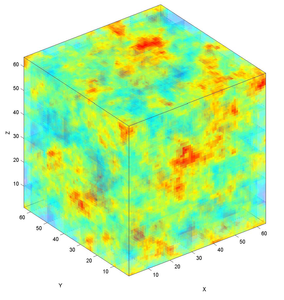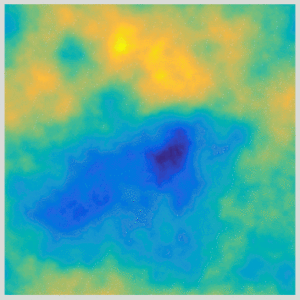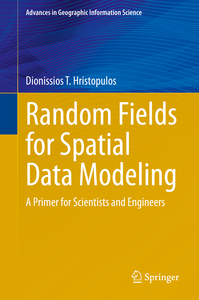Home
Recent Research Highlights
Non-Separable Covariance Kernels for Spatiotemporal Gaussian Processes Based on a Hybrid Spectral Method and the Harmonic Oscillator
Abstract: Gaussian processes provide a flexible, non-parametric framework for the approximation of functions in high-dimensional spaces. The covariance kernel is the main engine of Gaussian processes, incorporating correlations that underpin the predictive distribution. For applications with spatiotemporal datasets, suitable kernels should model joint spatial and temporal dependence. Separable space-time covariance kernels offer simplicity and computational efficiency. However, non-separable kernels include space-time interactions that better capture observed correlations. Most non-separable kernels that admit explicit expressions are based on mathematical considerations (admissibility conditions) rather than first-principles derivations. We present a hybrid spectral approach for generating covariance kernels which is based on physical arguments. We use this approach to derive a new class of physically motivated, non-separable covariance kernels which have their roots in the stochastic, linear, damped, harmonic oscillator (LDHO). The new kernels incorporate functions with both monotonic and oscillatory decay of space-time correlations. The LDHO covariance kernels involve space-time interactions which are introduced by dispersion relations that modulate the oscillator coefficients. We derive explicit relations for the spatiotemporal covariance kernels in the three oscillator regimes (underdamping, critical damping, overdamping) and investigate their properties. We further illustrate the hybrid spectral method by deriving covariance kernels that are based on the Ornstein-Uhlenbeck model.
D. T. Hristopulos, "Non-Separable Covariance Kernels for Spatiotemporal Gaussian Processes Based on a Hybrid Spectral Method and the Harmonic Oscillator," in IEEE Transactions on Information Theory, vol. 70, no. 2, pp. 1268-1283, Feb. 2024, doi: 10.1109/TIT.2023.3321215.
Arxiv: https://arxiv.org/abs/2302.09580
Information Flow Rate for Cross-Correlated Stochastic Processes
Abstract: Causal inference seeks to identify cause-and-effect interactions in coupled systems. A recently proposed method by Liang detects causal relations by quantifying the direction and magnitude of information flow between time series. The theoretical formulation of information flow for stochastic dynamical systems provides a general expression and a data-driven statistic for the rate of entropy transfer between different system units. To advance understanding of information flow rate in terms of intuitive concepts and physically meaningful parameters, we investigate statistical properties of the data-driven information flow rate between coupled stochastic processes. We derive relations between the expectation of the information flow rate statistic and properties of the auto- and cross-correlation functions. Thus, we elucidate the dependence of the information flow rate on the analytical properties and characteristic times of the correlation functions. Our analysis provides insight into the influence of the sampling step, the strength of cross-correlations, and the temporal delay of correlations on information flow rate. We support the theoretical results with numerical simulations of correlated Gaussian processes.
D. T. Hristopulos, "Information Flow Rate for Cross-Correlated Stochastic Processes," in IEEE Transactions on Signal Processing, vol. 72, pp. 839-854, 2024, doi: 10.1109/TSP.2024.3358580.
Random Fields for Spatial Data Modeling
A Primer for Scientists and Engineers
This book provides an inter-disciplinary introduction to the theory of random fields and its applications. Spatial models and spatial data analysis are integral parts of many scientific and engineering disciplines. Random fields provide a general theoretical framework for the development of spatial models and their applications in data analysis.
DOI: 10.1007/978-94-024-1918-4. Hardcover ISBN: 978-94-024-1916-0
Heal-LINK users can download an electronic version of the book by logging on their institutional HEAL-LINK account.
CONTENTS
- Front Matter, Introduction, Trend Models and Estimation, Basic Notions of Random Fields, Additional Topics of Random Field Modeling, Geometric Properties of Random Fields, Gaussian Random Fields, Random Fields Based on Local Interactions, Lattice Representations of Spartan Random Fields, Spartan Random Fields and Langevin Equations, Spatial Prediction Fundamentals, More on Spatial Prediction, Basic Concepts and Methods of Estimation, More on Estimation, Beyond the Gaussian Models, Binary Random Fields, Simulations, Epilogue
About the Geostatistics Laboratory

The Geostatistics Laboratory was founded in 2002, and it is headed by Prof. Dionissios Hristopulos (PhD). (A personal but not quite up-to-date web-site is found at this link.)
The GSLAB lab members have expertise in the following areas:
- Development of novel Geostatistical methods
- Fast algorithms for reconstruction of missing data
- Interpolation and simulation of scattered spatial and spatio-temporal data
- Numerical and theoretical models for random media
- Stochastic models of transport and other physical processes
- Statistical models of interevent times between extreme events such as earthquakes
- Applications of statistical physics to environmental problems

Some typical applications of interest include the following:
- Quantitative analysis of groundwater level variability (e.g., Messara valley of Crete)
- Estimates of mineral resources reserves (e.g., lignite fields of Western Greece)
- Statistical models of seismic risk assessment
- Analysis of GPS time series
- Environmental risk assessment based on geostatistical analysis
- Geostatistical analysis of precipitation
- Statistical models of mechanical strength, fracture, and earthquake recurrence times
- Novel space-time models based on statistical field theories
- Nonlinear kinetic models of grain growth and decay
- Principal mode analysis of damped harmonic oscillator in heat bath
